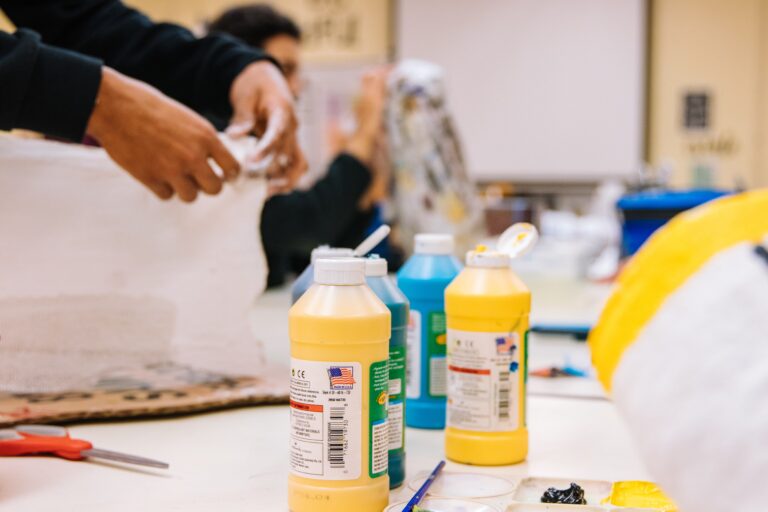
Arts and crafts supplies do not necessarily contain non-toxic ingredients, but some paints, glues, glazes, and even markers can pose hidden health hazards that we should be aware of. Hazards associated with arts and crafts materials can be mechanical, those involving damage to body tissue from objects, heat or electrical sources, or chemical, those which occur through breathing fumes and vapors, absorption through the skin, or by swallowing. Toxic ingredients in art supplies can be very harmful to human health especially in children who are more vulnerable to toxins due to their small size, higher metabolisms, and immature immune systems.
All art supplies sold in the US must bear the phrase, “conforms to ASTM D 4236,” confirming that they have been properly labeled for chronic health hazards, in accordance with the federal Labeling Hazardous Art Materials Act (LHAMA). Under LHAMA, art supplies must contain warnings if they cause acute hazards—such as “harmful or fatal if swallowed” or “may cause skin irritation”—as well as warnings if they could cause chronic health effects, such as cancer, sterility, blindness, birth defects, or allergic reactions.
This office is required to evaluate arts and crafts products for toxicity: Art Hazards and Children’s Health at California OEHHA . They also provide guidance on ways to reduce exposures to toxic ingredients in art supplies.
Helpful Information for Using Safer Products
- Art Hazards List
- Art Smarts! Quick Tips for Safe Use of Art and Craft Materials
- Art and Craft Safety Guide – U. S. Consumer Product Safety Commission
- Search for Alternative Products on the ACMI Database
- Understanding LHAMA with ACMI – The Art and Creative Materials Institute, Inc.
- Look up health and safety information on household products: Household Products Database

